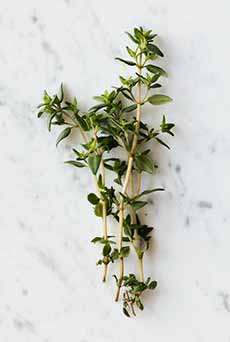RECIPE: Hot Feta Dip For Greek Independence Day
|
|
March 25th is Greek Independence Day. We love Greek food, and always have a selection of mezze in the fridge: babaganoush, feta, hummus, kalamata olives, tabbouleh; cans of grape leaves in the pantry; and pita in the freezer. So we’re ready for Greek Independence Day, with a bottle of Assyrtiko, a Greek white wine. The grape is indigenous to the island of Santorini, where it grows in the volcanic-ash-rich soil. This year, we’re adding this warm, salty-sweet baked feta dip or spread. The recipe is adapted from one by Murray’s Cheese—our favorite online resource for the best cheeses and accompaniments. > The History Of Feta Cheese Prep time is 10 minutes, bake time is 20 minutes. Ingredients For 4-6 Servings 1. PREHEAT the to 400°F, and preheat the boiler for Step 3 [or use the oven broiler]. Lightly toast the pita bread and transfer the feta to a small ovenproof dish or pan. 2. COVER the feta with olive oil and bake in the oven for about 8 minutes, until the cheese is springy to the touch but not melted. Then remove from the oven. Meanwhile… 3. MELT the honey in the microwave or over a pan of simmering water. When the honey is fluid, spread it over the top of the feta with a pastry brush, and put the feta under the broiler. 4. BROIL the feta until the top of the cheese has browned and begins to bubble. Remove, season to taste with black pepper, garnish with thyme leaves, and serve with the pita and other accompaniments. We have a kitchen scissors with a hole at the top of the blades. It’s meant to strip leaves off herbs: Simply pull the sprig through the hole. But there’s another way: Use your fine-mesh strainer. Simply pull the end of the thyme stems (photo #4) through a hole (you may have to expend some energy). The leaves will stay in the strainer. This works with any woody-stem herb: marjoram, oregano, tarragon, thyme and rosemary. Tip: If you don’t want to throw away the stems, stick them in the freezer. Both woody and soft herb stems can be used to flavor broths, soups and stocks. *Surprisingly, say the experts at Murray’s Cheese, only 2% of feta consumed in the U.S. actually comes from Greece, Murray’s sources authentic Greek feta (photo #3): pure sheep’s milk feta, directly from the ancient Greek regions of Thessaly and Macedonia. Artisan cheese makers follow the original, millennia-old recipe. The cheese is aged in wooden barrels for sixty days, resulting in a creamy texture and tangy, citric flavor— unparalleled among other fetas. Treat yourself! |
|
|
|
||






